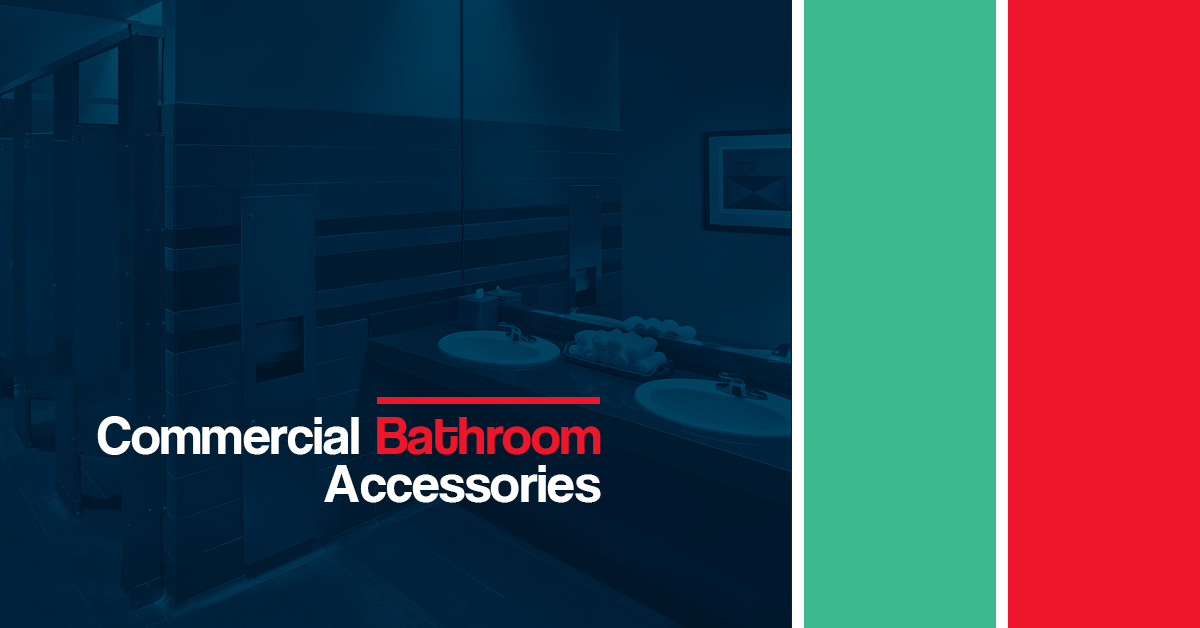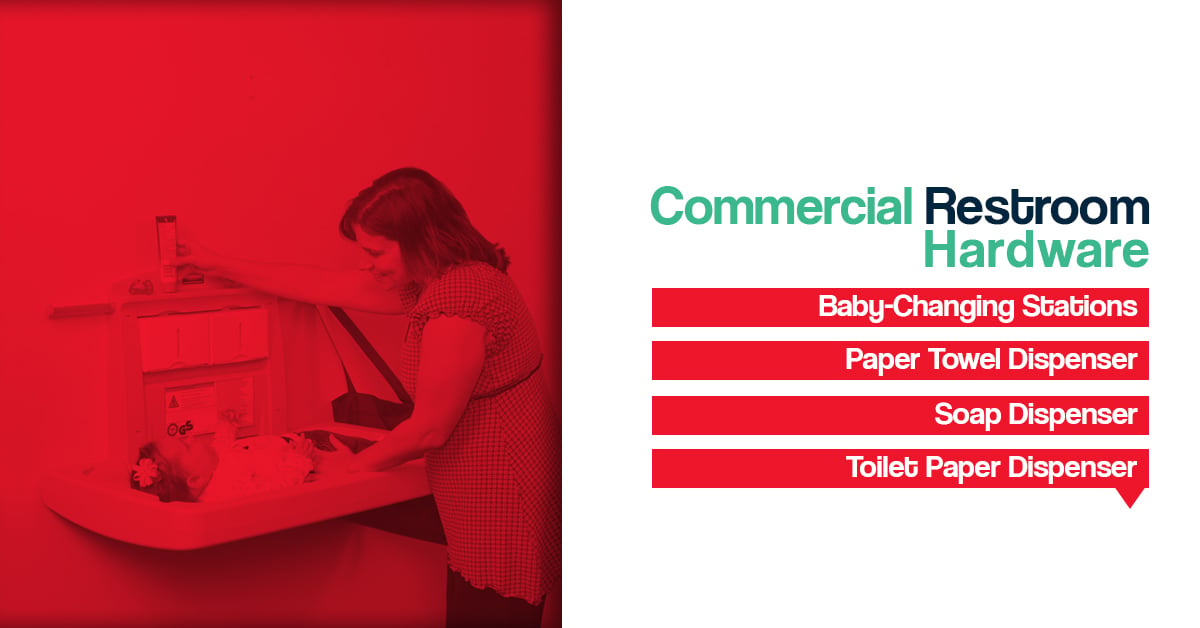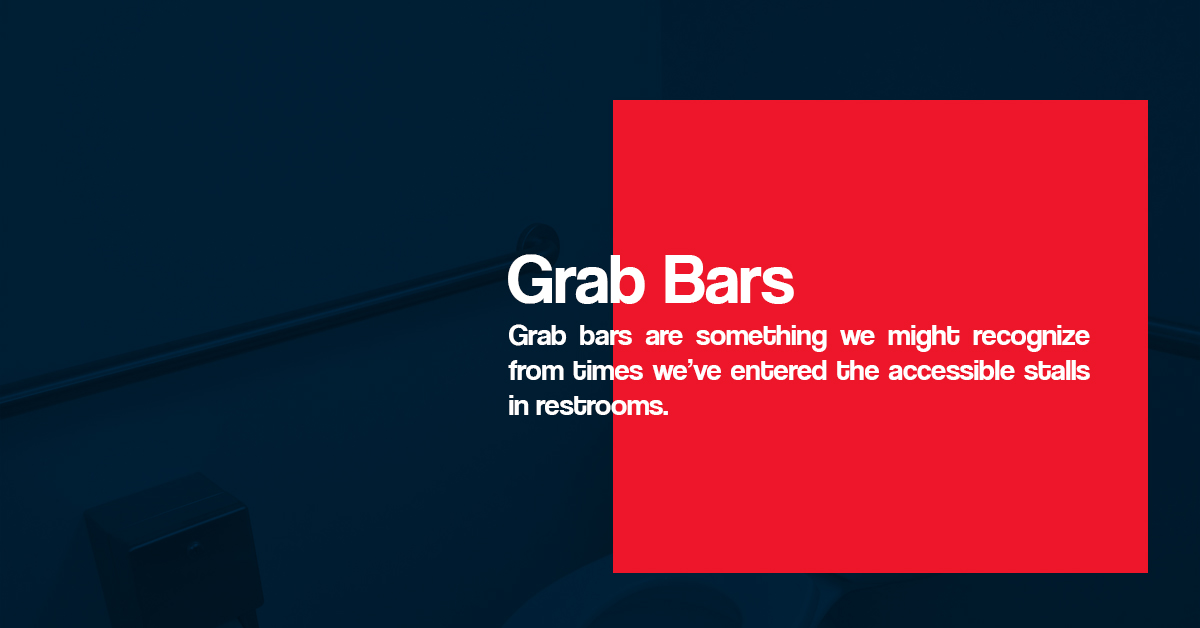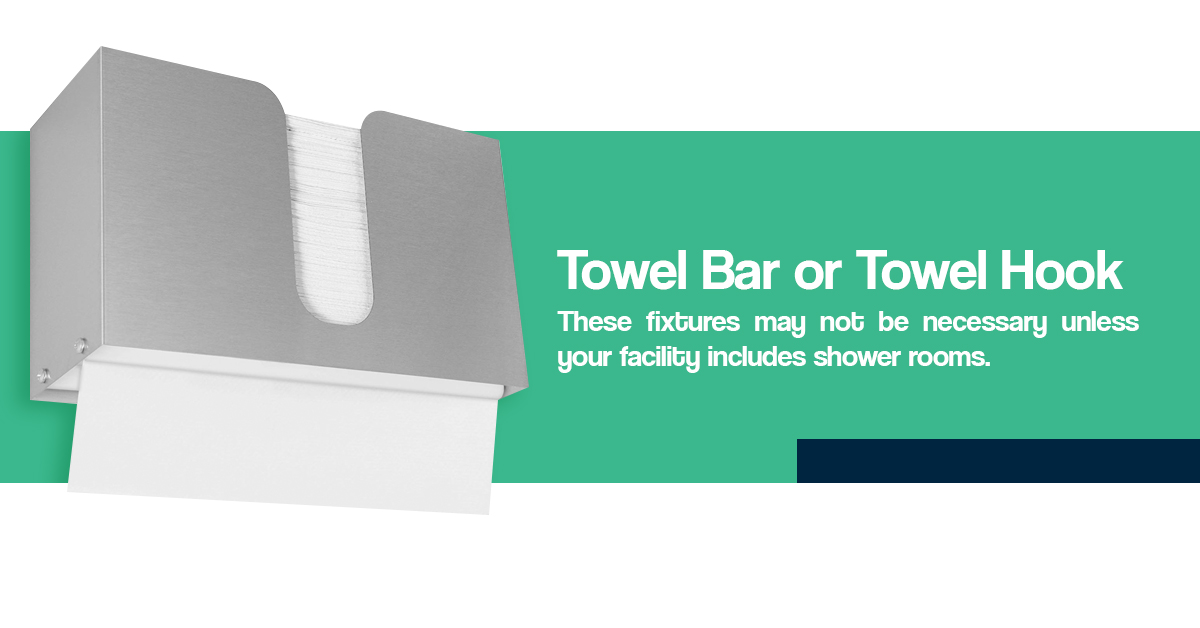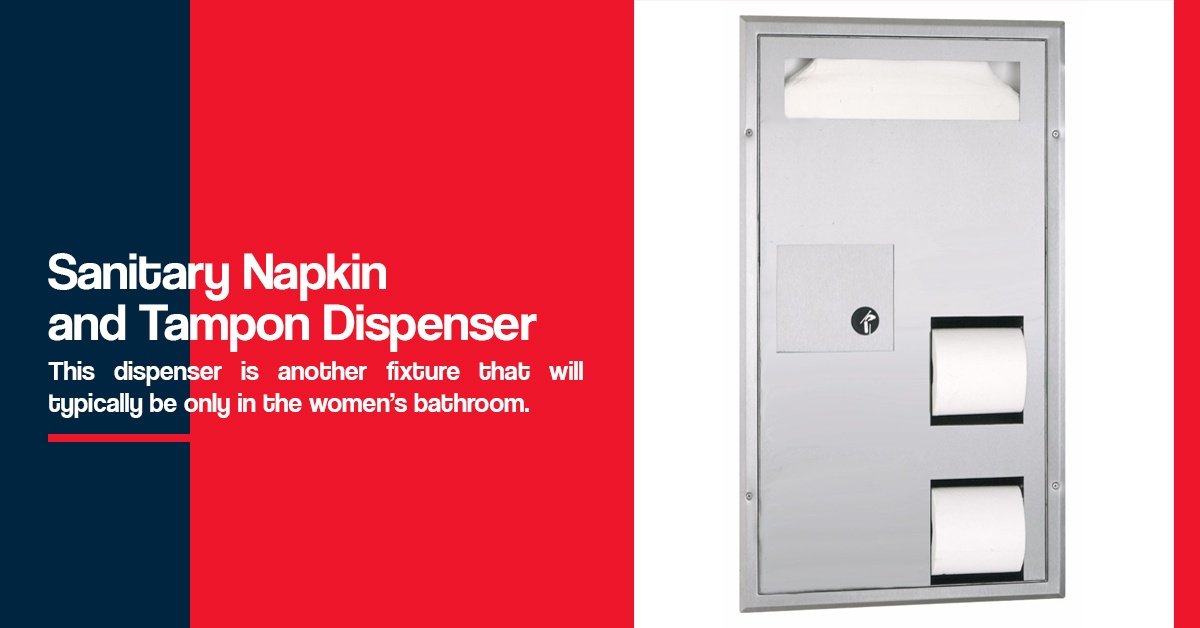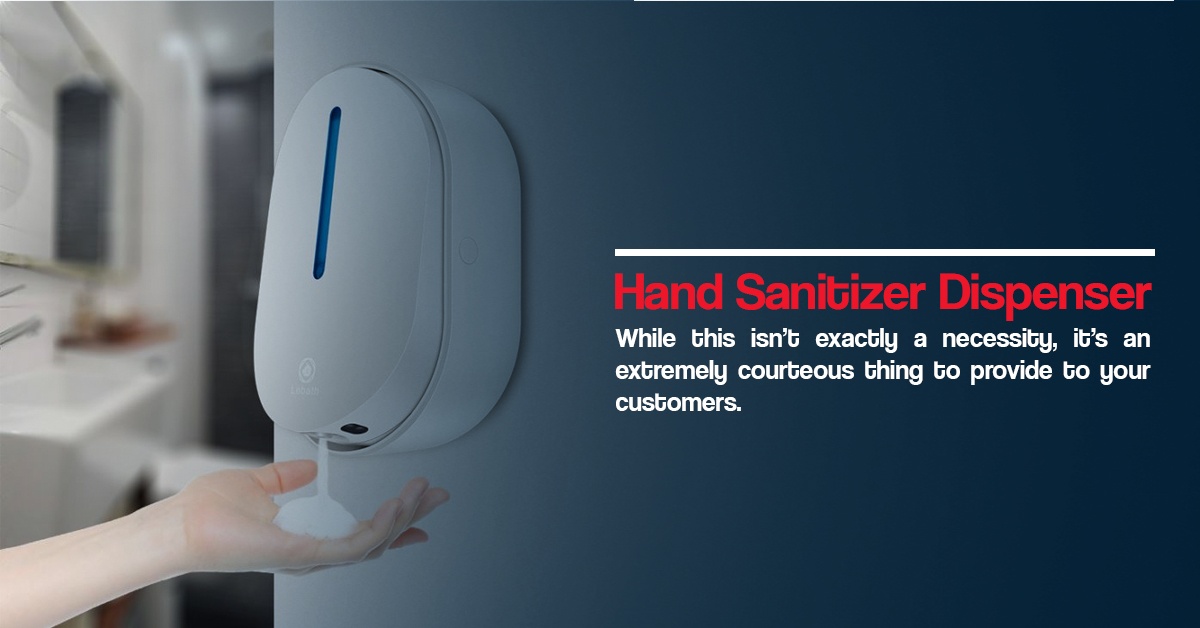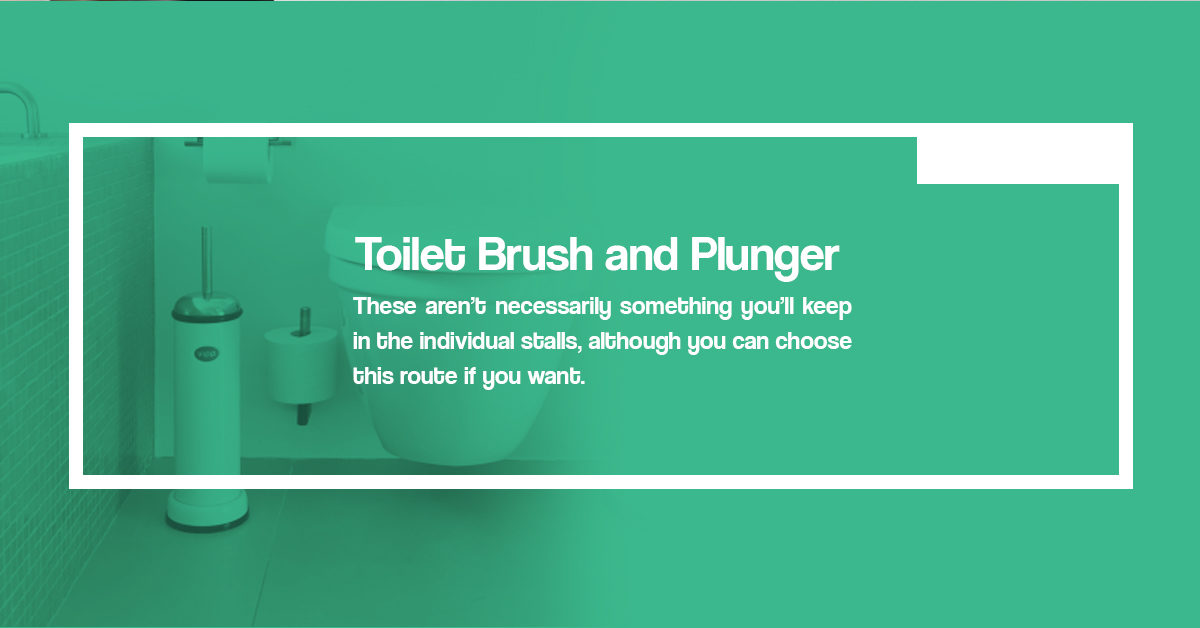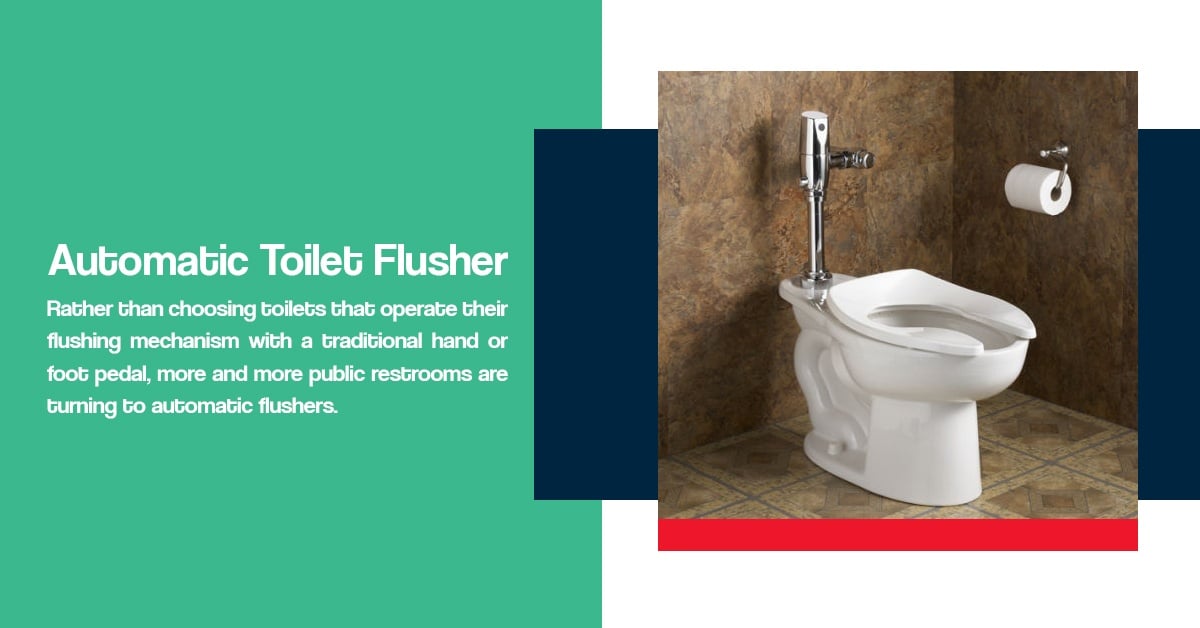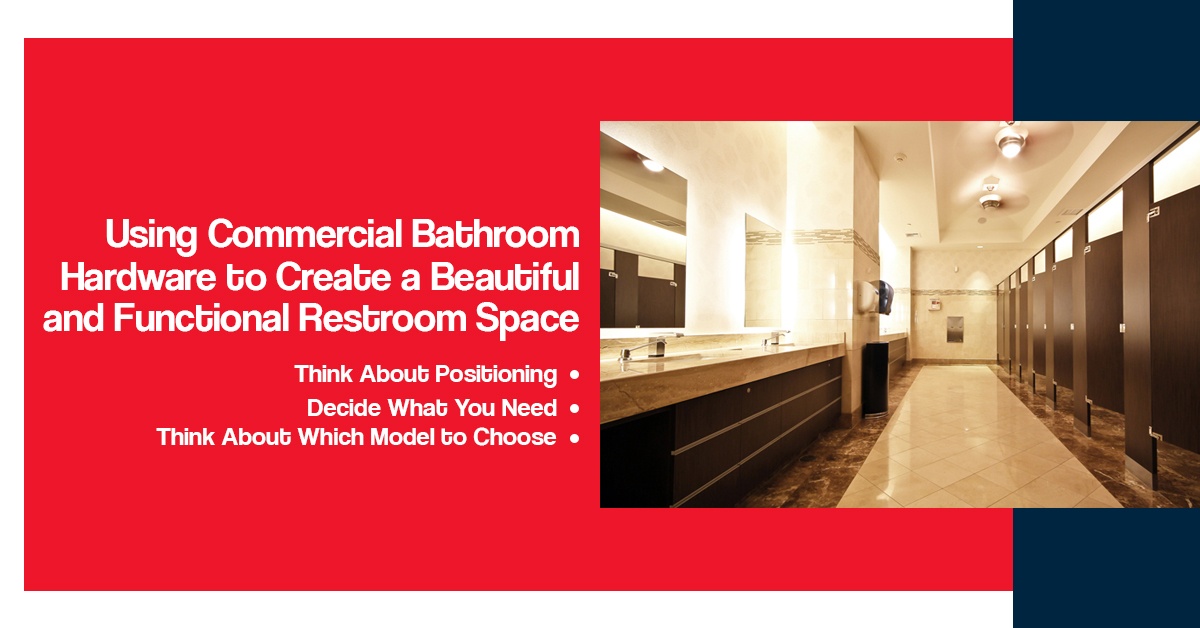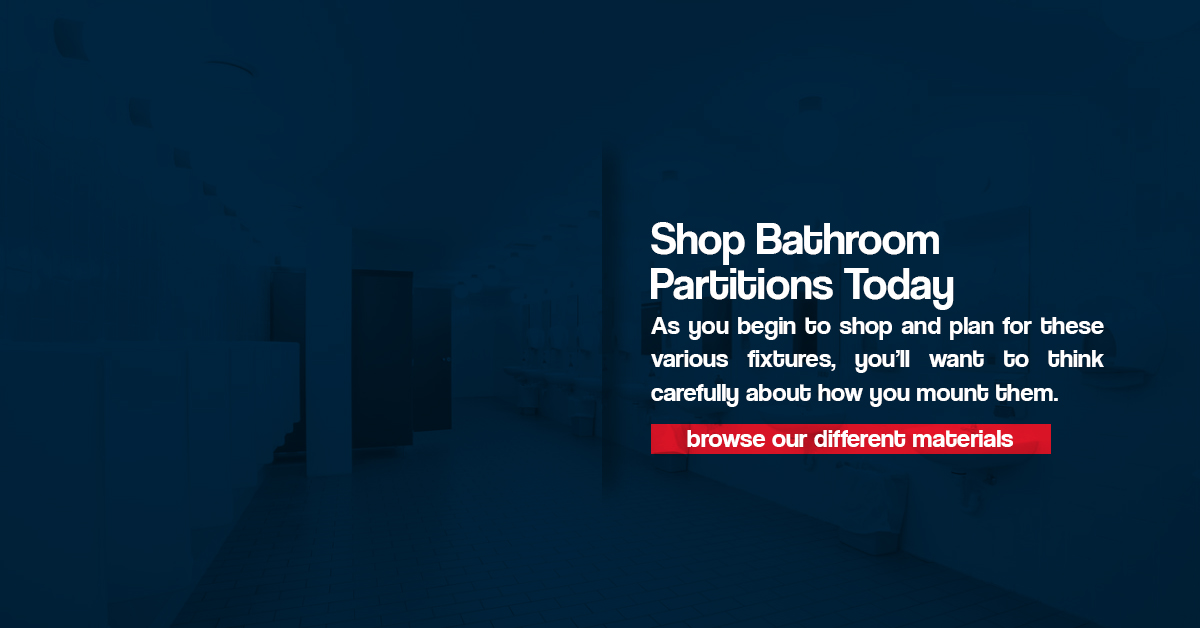Commercial Bathroom Accessories
Commercial Bathroom Accessories
When you begin designing or building a new bathroom, your immediate concerns are probably on the bones of the room. You’re likely thinking about things like where to place the walls, how many stalls there will be and where you will get them installed. However, a bathroom needs so much more than these bare bones, and as you set about planning, detailing and getting ready to build your bathroom, you’ll need to anticipate this.
Just one of the significant facets you’ll need to prepare for in your bathroom designing or remodeling is commercial restroom accessories. There are the additional fixtures and hardware pieces that might not compose the actual structure and layout of a bathroom but are nonetheless essential for your restroom facilities to operate normally and correctly.
To learn how you can best incorporate these commercial bathroom fixtures and get the most out of them, it’s helpful to know a bit about them first. To help you out with this, we’ve compiled a guide featuring everything you’ll need to know about commercial bathroom accessories, including what they are and how to use them.
Commercial Restroom Hardware
From handles and hooks to dispensers and disposals, these are the additional pieces of hardware you’ll need for your bathroom to be a functional space.
1. Baby-Changing Stations
Even if you’ve never had to use these yourself, you’ve likely seen these on the walls of the women’s bathroom. They’re often tucked into a corner near the door, somewhat away from the rest of the sinks and stalls in a bathroom. In most cases, they aren’t present in the men’s restroom, although there are exceptions to this.
There is no federal law requiring these to be present in most commercial spaces. Some states will require them, however, and government spaces such as post offices and government buildings must equip them as well. Many facilities choose to supply them anyway, as a convenience toward mothers with young children.
There are two different types of baby-changing stations: recessed and wall-mounted. Recessed changing stations require a bit more planning, as they need a hole or a recessed piece in the wall to insert the station. Wall-mounted stations, on the other hand, can get mounted directly to the flat and even surface of a wall anywhere.
In the case of both types of changing stations, the hardware itself is fairly similar. It consists of some kind of wall mount, and unfolds almost like a suitcase, with one side opening up to form a temporary sort of table that parents can lay their child on while they give them a quick diaper change.
2. Paper Towel Dispenser
As you probably know, these come in all shapes and sizes. Some dispensers are motion-activated and hands-free, while others have a hand crank on the side — yet still, others are open at the bottom, allowing you to reach in and grab the towels for yourself.
Only you can decide which type of paper towel dispenser is right for your setting. To help you decide, think of your budget, and what style fits best inside those constraints. You might also think about your location and how that affects your dispenser. For example, if you’re a restaurant or any other type of setting that deals with food, it might be especially important to curtail the spread of germs, making a hands-free option the best choice.
Whichever design you decide on, they all mount in relatively the same way. You’ll attach these dispensers directly to a flat wall surface, typically right next to the sinks for convenience after washing your hands.
3. Soap Dispenser
Every bathroom needs soap, and in commercial bathrooms, you need a way to store and dispense soap to the hundreds of visitors you’ll serve every day. For this essential bathroom accessory, you’ll need to decide whether to opt for bagged or bottled soap, as well as which style of the dispenser to choose.
Your options include wall-mounted pump models and sink-mounted motion-activated models. Both are excellent choices and will serve you and your guests well.
4. Toilet Paper Dispenser
Another bathroom essential that no facility can be without as a functioning space, toilet paper dispensers come in a variety of shapes and sizes. Some are recessed into the bathroom partition itself, while others mount on the outside of it.
One of the major differences between different types of toilet paper dispensers is size and capacity. While some are designed to hold one roll at a time, others have a rotating spindle design and hold two or more rolls all at once.
To decide which is better for you, think about the expected amount of traffic in your building. If usage will be substantial, it’s worth it to invest in a larger dispenser, or you’ll risk operating a bathroom that consistently runs out of toilet paper before the day is over. On the other hand, if your facility is small and experiences minimal traffic, there’s nothing wrong with sticking to a smaller dispenser.
5. Bathroom Trash Can
If your bathroom is going to have paper towels, it only follows that you’ll need trash cans as well. Even if you opt for air dryers instead of paper towels, you’ll still want to install trash cans so people can dispose of other restroom trash. These receptacles play a critical role in keeping your restroom neat, clean and sanitary. In general, your options here fall into two categories: wall-mounted and freestanding.
Freestanding trash cans may have an open top where bathroom patrons can dispose of their trash easily, or they may have a foot pedal. A swinging panel or flap may also cover the top. These are the more economical option while also being extremely accessible and easy to use.
Wall-mounted cans are set into the wall, usually in between metal panels, the lower of which hides the bin itself. The major advantage of this variety of trash can is that it saves space, and it’s also more resistant to vandalism or damage.
6. Air Freshener
While you can’t have a bathroom without soap or toilet paper, it’s entirely possible to have a bathroom without an air freshener. It isn’t required by any means. What an air freshener does, however, is elevate your restroom from a purely functional space to a luxury space.
Choose between passive air fresheners, programmed to release their fragrance gradually over time, or battery- or electrical-powered fresheners that release concentrated bursts of fragrance periodically.
7. Sanitary Napkin Disposal
Again, these are fixtures that will only be present in the women’s bathroom, typically mounted next to the toilet paper dispenser or on the opposite partition, close to the toilet. While they aren’t necessary, as there will be a trash can elsewhere in the bathroom, they are becoming increasingly popular and universal because of the sheer convenience and privacy they offer to bathroom users.
As with trash bins, napkin disposals can be either recessed into the wall or on the floor in a traditional can with a lid. While the freestanding disposals are more affordable, their wall-mounted counterparts will last longer and are better equipped to resist damage and vandalism.
8. Grab Bars
Grab bars are something we might recognize from times we’ve entered the accessible stalls in restrooms. In some cases, they’re in response to ADA mandates, and in other cases, they’re there as a courtesy to elderly or disabled users.
These typically take the shape of one long bar that mounts onto the wall at either end, providing a stabilizing handle someone can grasp as they move from standing to sitting and vice versa. In most cases, one of these bars will be mounted on either side of the toilet.
9. Towel Bar or Towel Hook
These fixtures may not be necessary unless your facility includes shower rooms. If you do have showers, however, this is an extremely courteous accessory to provide for your bathroom users. It gives them a safe, dry and convenient place to hang their towel, typically right outside the shower stall, until they’re ready for it.
These may take a few different shapes. There may be an actual curved hook shape, or there may be a single bar sticking out, ending in a raised nub that hooks the towel. It may be one single hook outside each shower stall, or it may be a long bar with a row of hooks where everyone can hang their towels together. Grouping the hooks together may be more straightforward from a design perspective, but it may not be the best solution for the privacy of the shower user.
In some cases, this fixture may not even truly be a hook. Instead, it may take the form of one long bar, attached to the wall at either end similarly to a grab bar. That may work for your shower space, although some may find it is not an efficient means of using space.
10. Sanitary Napkin and Tampon Dispenser
This dispenser is another fixture that will typically be only in the women’s bathroom. In most cases, one of these will be affixed to the wall near the sinks or someplace else where it’s easily accessible.
The design of these fixtures is quite simple and looks virtually the same across all models. There is a flat, metal box, finished with two turning knobs at the bottom to dispense the products. Models are either wall-mounted and laid flush against the wall itself, or recessed and set into the wall itself. You will also be able to decide whether to dispense the products for free, for 25 cents or 50 cents.
11. Hand Sanitizer Dispenser
While this isn’t exactly a necessity, it’s an extremely courteous thing to provide to your customers. No matter how well and often you clean your bathroom, any public restroom is still a place that tends to collect germs. Because of this, many people feel better leaving the bathroom with the extra protection of a coat of hand sanitizer.
The two options you’ll be able to choose from are a wall-mounted dispenser or a stand-mounted dispenser that rests on the floor. In either case, these will usually be next to the door so people can choose to take this final sanitary precaution before leaving the bathroom.
12. Toilet Brush and Plunger
These aren’t necessarily something you’ll keep in the individual stalls, although you can choose this route if you want. In most cases, however, you’ll find tools like plungers, toilet brushes, mops and more stocked on a janitor’s cart, and the cleaners will use them as they make their periodic rounds.
13. Urinal Screens and Deodorizers
Just as we’ve mentioned several items that will only be available in the ladies’ bathroom, this is one accessory that will only show up in the men’s room. These are typically mounted inside the urinals and are designed to release bursts of fragrance that keep your restroom smelling clean and fresh. Depending on the style and model you choose, it may also discharge a coloring agent, so you can see it’s working.
14. Automatic Toilet Flusher
Rather than choosing toilets that operate their flushing mechanism with a traditional hand or foot pedal, more and more public restrooms are turning to automatic flushers. The main advantage of this, of course, is that it allows bathroom patrons to enter the stall, use the toilet, flush and leave again, all without ever touching any part of the toilet with their hands. This step is significant in preventing the spread of germs.
These flushers are usually motion-activated and battery-powered. The batteries will last several years, in most cases, making these flushers an obvious choice that’s not only sanitary but also convenient and efficient for you.
Using Commercial Bathroom Hardware to Create a Beautiful and Functional Restroom Space
A bathroom could not be a bathroom as we know it without walls, partitions, sinks, doors and more. And of course, neither could a bathroom be a bathroom without the essential fixtures such as soap dispensers, toilet paper dispensers, trash cans and more. As a builder, designer or business owner, your task is clear. If you’re outfitting a bathroom for your commercial space, you need to marry these two design elements for maximum functionality and practicality.
Here are some of the ways you can combine these two elements to achieve the best bathroom design.
1. Think About Positioning
One of the most significant ways you can control the functionality of your bathroom is through knowing how to position the various fixtures correctly. For example, the baby-changing station typically gets tucked into the corner where it can be relatively out of the way. The toilet paper dispenser mounts onto the partition directly next to the toilet. The sanitary napkin disposal either goes right next to that or on the opposite partition on the other side of the toilet.
Through carefully positioning these different pieces of hardware, you essentially make them invisible to your customers. In other words, they’re so well-positioned the customers don’t even have to think about them because they’re right where they should be.
2. Decide What You Need
While some of the fixtures we’ve discussed are absolute necessities, others are more optional. Still, others are necessary for one gender’s bathroom, but not for the others. Because of this, there’s a bit of subjectivity on your part as you work to decide what items you’ll include in your bathroom and which you’ll leave out.
For example, if your bathroom is only a one-person space that you don’t expect to get much traffic, perhaps you don’t need an air freshener, but maybe it’s practical to provide a toilet plunger to keep right in the bathroom. On the other hand, if you’re stocking a bathroom with 100 different stalls, it may be more necessary to provide something like hand sanitizer and sanitary napkin dispensers.
3. Think About Which Model to Choose
With many of the different fixtures and pieces of hardware, there is a multitude of options to choose from. With something like a paper towel dispenser, for example, there are motion-activated models, crank models and models with exposed papers you can pull on.
Part of outfitting your bathroom is deciding which model will work best for you. Some of the things you’ll want to take into consideration as you make these decisions include:
- Budget: Different models with different features come at different prices. Realistically, your budget is what it is, whether it’s virtually unlimited or small and constrained. Your job is to determine which model fits the best into your budget and makes the most sense for your purposes. Remember that sometimes, just because an option is more expensive, it doesn’t mean you won’t save money in the long run by purchasing something that will last longer.
- Traffic levels: How many people do you expect to use your bathrooms? That will play a huge role in determining which models to buy, as some are naturally equipped to serve more people, while others are better suited to smaller spaces. Toilet paper dispensers are an excellent example of this, as some only hold one roll of paper at a time, while others can load as many as three different rolls at once.
- Number of stalls: In most bathrooms, a typical layout includes a handful of stalls, a few urinals if it’s a men’s room and a few sinks. However, some bathrooms are only for one person and consist only of one small room with no stalls at all. In this case, the accessories you’ll need and want will be different. For example, you may not need a sanitary napkin disposal area if the room already has a basic trash can.
- Gender: As we mentioned in discussing various individual fixtures, some are useful for women’s bathrooms but not men’s, and vice versa. Naturally, then, the gender of the bathroom you’re designing will dictate some of the accessories you’ll need, as well as some of the ones you can skip. If you’re creating an all-inclusive gender-neutral bathroom, then you’ll want to opt for many of these accessory items.
Shop Bathroom Partitions Today
As you begin to shop and plan for these various fixtures, you’ll want to think carefully about how you mount them. When it comes to the items that need to be in the stalls themselves, part of your success will depend on having sturdy and reliable partition panels to mount them on.
For partitions that will play their part in making your bathroom the very best it can be, we hope you’ll turn to us here at One Point Partitions. We offer global bathroom partition hardware, panels and doors in a variety of materials, colors and styles, so no matter what your bathroom design needs are, we can meet them. And we don’t just sell materials, either. We also want to help you design your bathroom, and we’ll work together with you to come up with a layout that’s perfect for what you need.
To get started with One Point Partitions, browse our commercial bathroom partition material options to decide which one might work best for you. And once you’ve decided that, move to our free price quote tool to get an idea of how to start building your budget.

